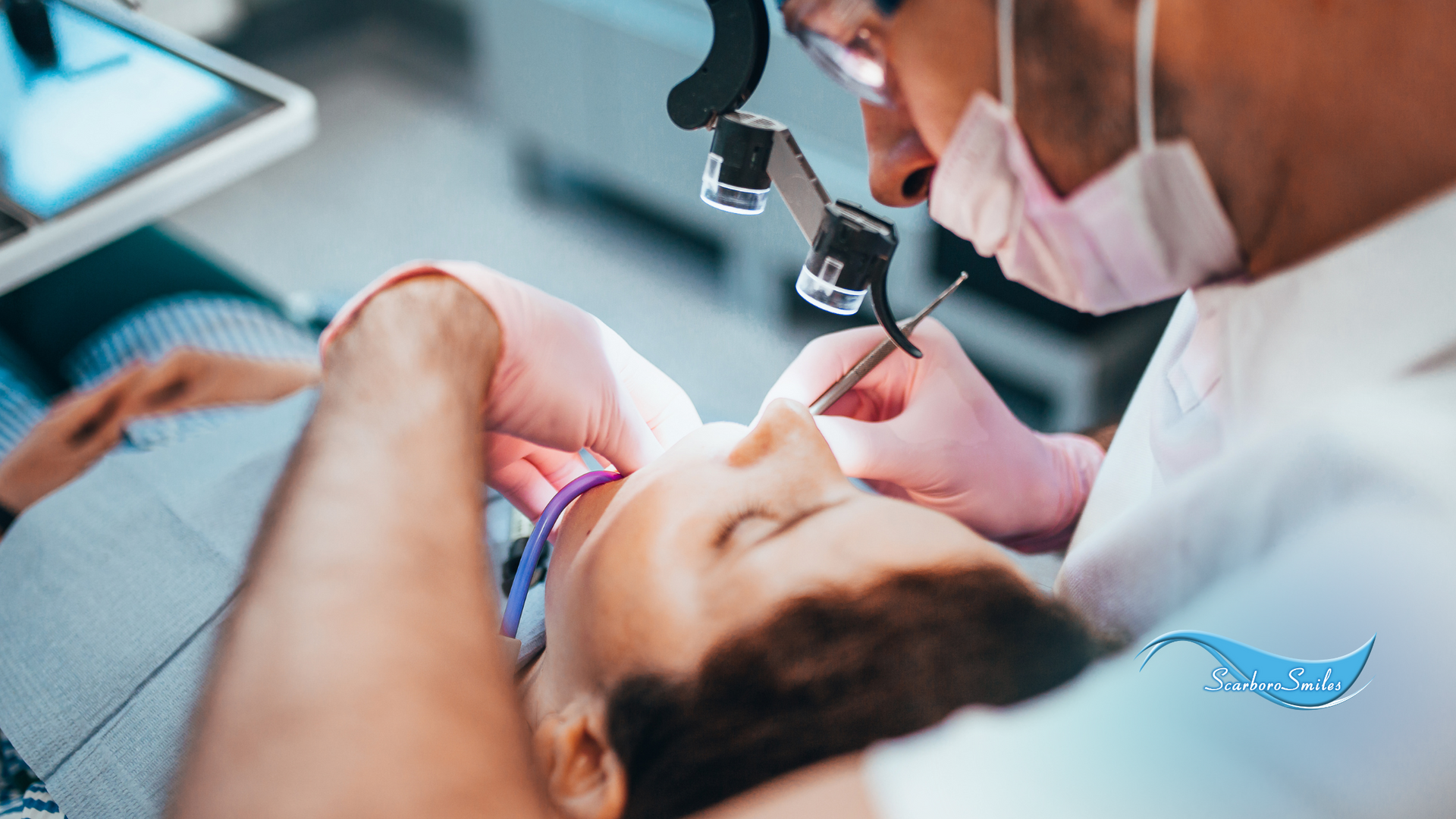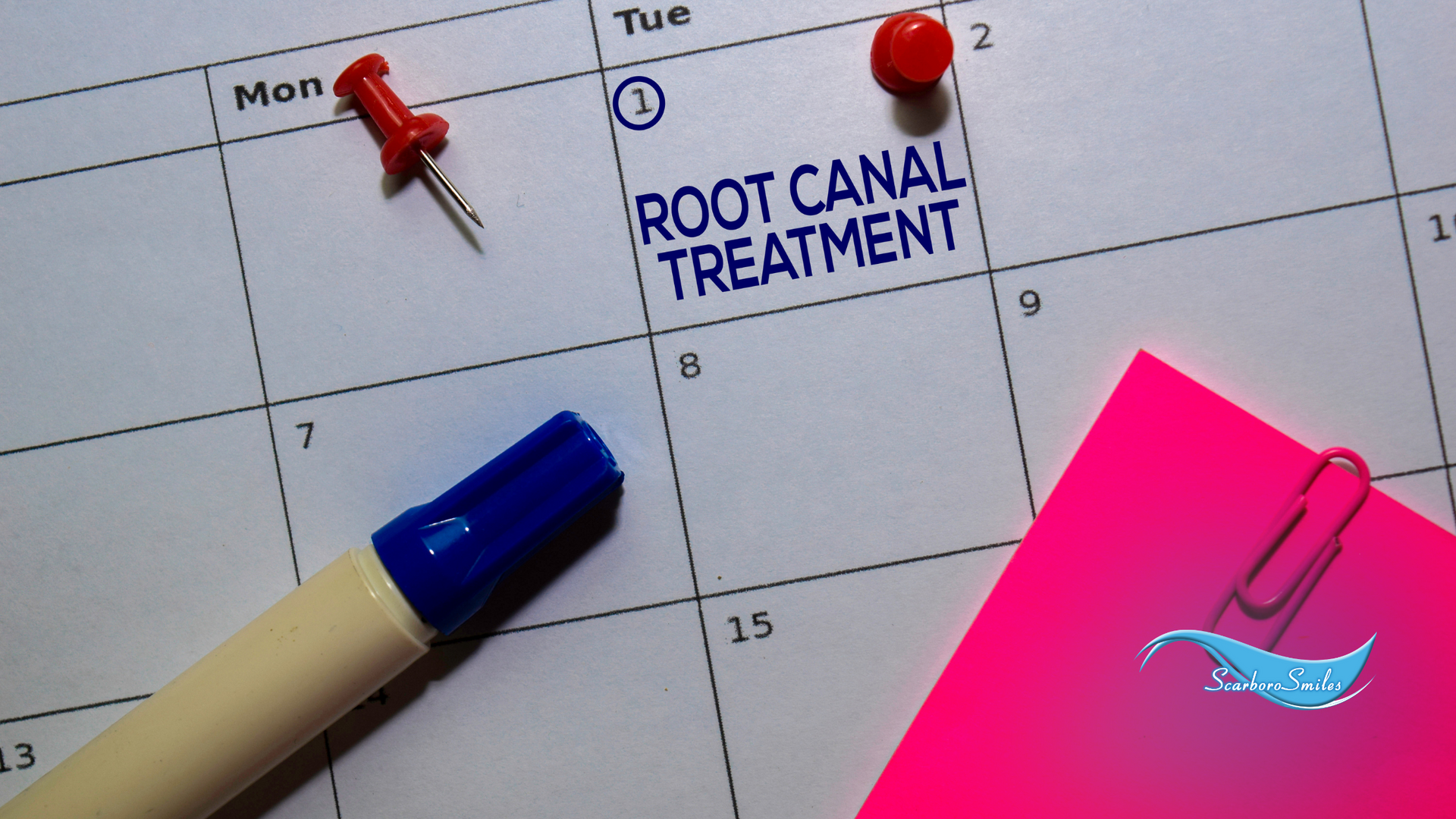Caring for Your Smile: A Comprehensive Guide to Root Canal Therapy

Source: Dr. Marketing
A root canal is a common procedure that dentists often perform, and patients will generally undergo treatment when they are under local anesthesia. The procedure concentrates on the removal of the soft center of the tooth, which is known as the pulp. Our team at ScarboroSmiles, which has an office in the Scarborough Town Center, has summarized root canal treatment, what patients are ideal candidates, and tips to preserve your oral health in the aftermath.
What is a root canal?

Your teeth are formed by layers, with the hardened outer surface being the enamel and the inner layer representing a porous referenced as dentin. For every tooth, the center is a collection of soft tissue (pulp) that contains the nerves and blood vessels that allow your tooth to grow. Also, the pulp is full of cells (odontoblasts) that preserve the tooth's health.
During a root canal procedure, your dentist will remove the pulp of a tooth that has become infected or damaged, whether that was by tooth decay or other factors. This treatment is perceived to be extremely reliable, and it can save your teeth.
Although root canal infections are uncommon, there remains a minor possibility that the tooth can become infected following the procedure.
Who needs a root canal?

When your pulp is injured, inflamed, or infected, a root canal can be performed by your dentist. The crown of the tooth above the gumline might appear to be fine, but that can be the case even if the pulp has been impacted. To preserve the structure of your tooth, removing injured or infected pulp is the best resolution.
Your pulp could be damaged by extensive decay from an untreated cavity, a chip or crack in the tooth, several dental procedures being performed on the same tooth, or an injury to the tooth.
Common symptoms of damaged pulp are discomfort in your tooth, swelling, and the feeling that your gums are heated.
Before treatment
Before the root canal procedure, your dentist will examine your tooth and take X-rays to verify the diagnosis. If you do need a root canal, your dentist might refer you to an endodontist to receive treatment.
Treatment synopsis

First, your dentist will apply a small amount of numbing medication to your gum near the affected tooth. After it has produced the numbing effect, a local anesthetic will be injected into your gums. Although you might experience a pinch or burning sensation, it is brief, and the local anesthetic will prevent you from feeling any further discomfort.
Our dentist or an endodontist will create a small opening in the top of the tooth once it is numb. Having exposed the infected or damaged pulp, they will then remove it with special tools (files). The pathways (canals) in your tooth will be thoroughly cleaned out.
Following the removal of the pulp, your dentist might coat the area with an antibiotic to ensure that the infection has been eliminated and to prevent future infection. After the canals are cleaned and disinfected, your dentist will fill and seal the tooth with a sealer paste and material that resembles rubber (gutta-percha). You might also be prescribed oral antibiotics.
To complete the procedure, your dentist will fill the small opening in the top of the tooth with a temporary material. This is intended to prevent the canals from being negatively affected by saliva.
After-care for root canal treatment

Because your gums and teeth might experience soreness when the numbing medication diminishes in its effect, your dentist will likely prescribe you over-the-counter pain medications (Tylenol, Advil). Should the discomfort become extreme or experienced for more than a few days, contact your dentist immediately.
You are encouraged to avoid chewing with the damaged tooth until it is permanently filled, or a crown is placed on the top.
A few days after the root canal, you will visit your dentist to have X-rays taken and confirm that the infection is removed. Also, the temporary filling will be replaced with a permanent filling.
Typically, it takes numerous weeks to become accustomed to how the tooth feels following the treatment.
Are there alternative treatments to root canal therapy?
Unfortunately, there is no alternative option for effectively treating your tooth's pulp when it has become infected or damaged.
What can happen if you avoid a dentist-recommended root canal treatment?
Neglecting a root canal infection can allow it to spread to surrounding tissue within your mouth, such as the gums, other teeth, and tissue in the cheeks and face. An infection of this type will not be resolved until you receive treatment.
How to prevent a root canal in the future

To avoid a future root canal infection, you should adhere to these guidelines:
- Brush and floss your teeth twice per day.
- For the initial few days after a root canal procedure, use a gentle, antiseptic mouthwash.
- To treat any soreness post-treatment, use an over-the-counter pain medication.
- Visit your dentist for the permanent restoration or crown as quickly as you can, as it will allow the sealing of the root canal from bacteria.
- Schedule dental cleanings twice every year to preserve the health of your teeth and detect any infections early.
- Contact our dental practice immediately if you recognize any signs of infection.

Root canal treatment can potentially save your tooth and if you notice any symptoms of an infection, you should contact the team at ScarboroSmiles. You can schedule an appointment in our office, located in the Scarborough Town Center in Scarborough, Ontario, by calling (416) 519-6825 and we will determine if you need a root canal procedure performed.
We offer oral health options for the entire family!





